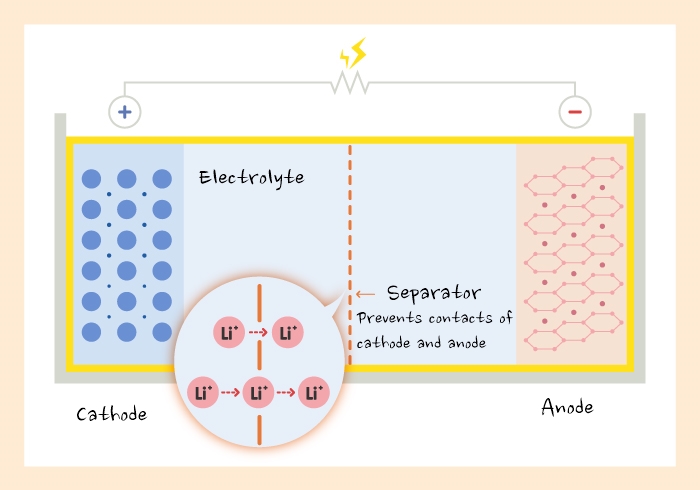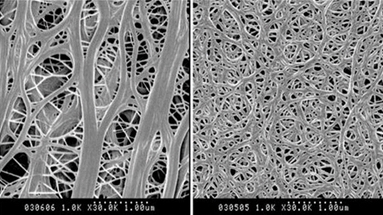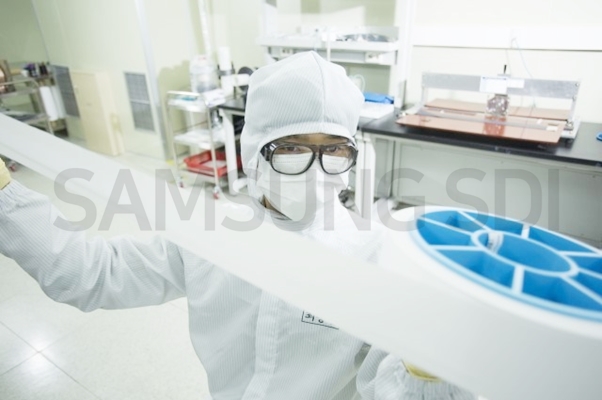
TECHNOLOGY
‘Separator’ that Ensures Battery Safety
ALL > Technology
As cathode and anode decide power of a battery, separators are associated with safety. Today, let’s take a look what are features and roles of separators, and related technologies.
‘Separator’, a barrier that keeps cathode and anode apart
A separator is a thin insulating membrane, and has about four features. First, as you can see from the name, separators separate cathode and anode to prevent contacts of them inside a battery.
Secondly, separators have submicron-sized pores that human eyes cannot see, and the pores work as channels where lithium-ions move between cathode and anode.
Thirdly, if the temperature of a battery rises above a certain point, the pores on the surface of separators are blocked, and lithium-ions cannot move, causing short circuit.
Lastly, separators have high mechanical strength, so they prevent by-products or foreign substances from coming in to ensure safety.

[ Lithium-ion moving through pores of a separator ]
What are the requirements to have a good separator?
Unlike other materials, separators are directly linked to safety, so we should meet several requirements to have a good separator.
To use as separators, the material should be electrochemically-stable and high-insulation. Separators should prevent contacts of cathode and anode, but if they react to lithium-ions or other ions inside a battery, that would be a big trouble.
And there should be a number of pores of the same size on the surface of a separator so that lithium-ions can smoothly move between separators. If there are not enough pores or their sizes are different, lithium-ions cannot move easily.
And, if the temperature of a battery goes over a certain point, separators should be able to ensure safety by shutting down pores and blocking the move of lithium-ions.
Lastly, separators should be thin enough to put more active materials in a battery to increase energy density. And at the same time, they should have high mechanical strength to prevent damage and secure safety.

[Microscopic image of a separator]
Upgraded separator with the coating technology
High-molecular materials with high insulation such as polyolefin, polypropylene are used for separators. These materials are stretched to make tiny pores, and there are dry and wet processes to do it.
A dry process is to stretch film materials by using mechanical force to make pores, and a wet process is to add additives to film materials to make pores chemically. The dry process is simple, but makes pores in different sizes and has weaker mechanical strength than the wet process. The wet process, on the other hand, has a complicated manufacturing process and is expensive, but it makes pores of the same size.
We used to use one film material as a separator, but these days, we use various materials by coating them to enhance performance of separators.
Samsung SDI is working hard to have a competitive edge by securing our own separator coating technology. We developed an ultra-high heat-resistant separator to ensure safety, and thin films to increase capacity. And we are currently using adhesive separators for high quality, and working on the high heat-resistant adhesive separators, which is at the final stage of mass-production for high safety and quality.

[Samsung SDI’s separator]
We’ve learned about roles, features and the future technology of a separator. As separators are directly connected to the safety, we will work harder to thoroughly examine and develop a safe battery.










